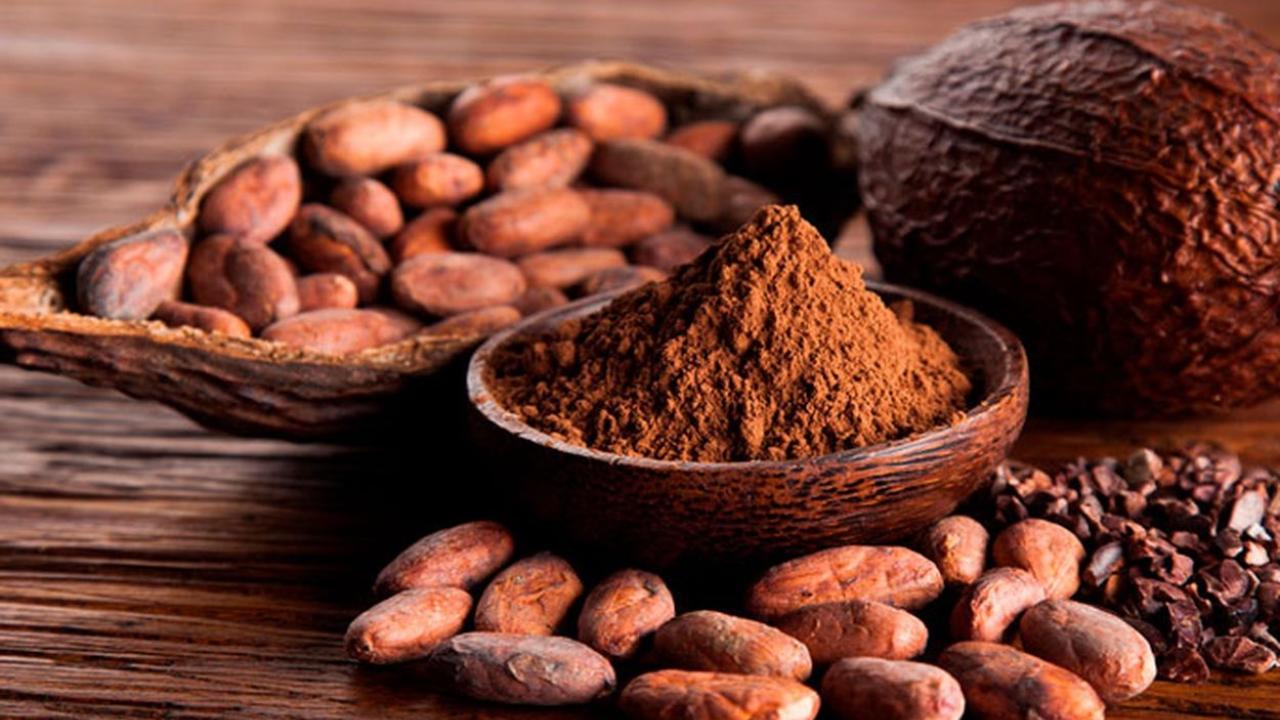
While plantations are expanding in Colombia to protect cocoa from drought, in Peru the links between farmers and chocolate makers are being strengthened in the face of speculation in the international market.
It is a fact. Cocoa prices remain on an unstoppable rise, caused by the continued shortage in West African plantations. Climate change and pests do not give up and this Friday the 19th, the metric ton of cocoa registered an increase of 6.2% to reach US$ 11,722.
However, grain processing has increased 4% in North America during the first quarter, as last year's processed grains are being used. Therefore, the consequences of the rise could manifest themselves in the US chocolate industry even in the following months.
Meanwhile, in South America, cocoa and chocolate producers face the rise in raw materials from different perspectives. What appears to be a historic opportunity to cover African production may become a headache for deals between exporters and farmers. This is what Eduard Baquero, president of the board of directors of the National Federation of Cocoa Growers of Colombia, experiences .
“What we have seen is a great concern with the dialogue with exporters. "Especially taking into account that, as in a good part of commodities, everything is negotiated in the future, so what some exporters demand of us is that we charge them for the cocoa at the lower price that was originally negotiated under other circumstances," Baquero declared for AméricaEconomía to beginning of April.
COLOMBIA: AN EMERGING MARKET
However, the union president highlights that Colombian producers have made an effort to anticipate the rise by diversifying their exports. From the first months of 2024, the export of cocoa beans is no longer prioritized, but also value-added products such as liquors, butter, bars, chocolates, among others.
Although aside from this decision, Baquero realized that cocoa bean exports in the first two months exceeded the figures for all of last year. But everything indicates that it is a temporary phenomenon. “The most likely thing is that there are people who already had the cocoa purchased at lower prices and simply exported it. When analyzing the partial data for March, what we see is that exports no longer follow the same trend, because cocoa is already much more expensive in Colombia,” Baquero highlighted.
In general terms, the coffee-growing country is an emerging player in the cocoa industry. It is currently the tenth largest producer in the world and exceeded 69,000 tons produced in 2021. But Colombia could climb further positions in the medium term, since in February, it received the gold distinction in the Cacao of Excellence contest , organized in Amsterdam (Netherlands). ). The quality of the grains was highlighted, as well as the work of the farmers in the production and distribution chain.
However, as happened with neighboring Ecuador, Colombian producers have not been immune to the ups and downs of climate change. “We are coming from a La Niña Phenomenon that caused 35 months of incessant rains in a good part of the cocoa growing regions. Excess rainfall leads to greater humidity and therefore, a greater incidence of phytosanitary problems that affect cocoa cultivation. This is how fatal fungi appear such as moniliasis, “witch's broom,” among others. So, we went from producing 69,000 tons two years ago to being reduced to 60,000 tons,” laments Baquero.
However, as incredible as it may seem, the El Niño Phenomenon of 2023-2024 did not affect production considerably. It turns out that to face the droughts of the Phenomenon, Colombian cocoa farmers had an ace up their sleeve: an agroforestry system. According to Baquero, it is a forest that distributes the plots, cocoa plants and accompanying trees in an equitable way that guarantees the best use of space, water and nutrients for times of drought.
“Basically, what we have worked on in agroforestry systems is to look for a permanent plant that generates permanent and temporary shade for cocoa cultivation. In Colombia, there are many plants that generate shadows naturally, such as bananas or some citrus and avocado trees. So, the crops are not directly exposed to the sun's rays, but rather to a projection that does not directly impact the cocoa crop and also protects the soil,” highlights Baquero.
These circumstances have allowed, according to the union president, last January to become the month with the highest cocoa production of the last decade in Colombia. This is the natural consequence of the cessation of the rains present in the second half of 2023. Currently, although the end of El Niño has brought a return of rainfall to the producing areas, it is not expected to reach the magnitude of the previous year. .
From a long-term perspective, Baquero believes that we should focus on improving the productivity of plantations. The usual thing is that more than 450 kg per hectare is produced, but the objective should exceed one ton (1,000 kg). “So we are with the purpose of renewing sick and unproductive plantations so that productivity grows. As more people produce more cocoa on the same cultivated area, there are greater benefits. Furthermore, it is a strategy so that when world prices fall again, there will not be such a big impact,” he maintains.
THE “LA IBÉRICA” CASE
At first glance, Peru has a situation similar to that of Colombia. During 2023, the Andean country exported 71,126 tons of cocoa for US$ 226 million, according to the local Ministry of Agriculture and Irrigation. These numbers represent an increase of 8% in volume, as well as a notable 45% in value compared to 2022. It is evident that the Andean country is a rising player in the cocoa industry; However, there is still a long way to go for the country to become a protagonist in this market.
It is a situation that veteran businessmen in the country recognize. For example, Bernardo Suárez, CEO of La Ibérica , a century-old chocolate brand from the city of Arequipa, defines Peru's role in the cocoa industry in this way.
“Peru produces cocoa, but little compared to other countries. We do not influence the world price. Rather, we adapt to that price. Those who do influence the world price are the Africans, accounting for 70% of total production. And since they suffered a 34% drop in their production, the world's cocoa supply has dropped by 25%. “This way we can explain why the price of cocoa has increased more than four times,” Suárez explains to AméricaEconomía .
As a result of the rise, American and European buyers have begun a process of stockpiling and speculation around cocoa. In this way, the massive purchase and storage of raw materials has increased prices even further. But Suárez clarifies that La Ibérica avoided this international trend, because it is supplied through Peruvian cocoa producers. To be specific, the chocolate maker acquires the ears in the La Convencion valley of Cusco, located a few hundred kilometers north of Arequipa.
However, many producers resorted to stockpiling, as new merchants tried to obtain a share of the market and thus take advantage of the global rise. Therefore, prices increased and according to Suárez, by the beginning of April, the price of cocoa in the Cusco town of Quillabamba was equivalent to that of the international market. “Happily, since we have worked for many years in the area, the farmers give us preference, because they know that we will continue buying from them for many more years,” says the manager of La Ibérica.
The alliance with local producers allows them to work with two varieties of cocoa: “the standard”, a hybrid cocoa originating from Brazil, which, although it is more productive, does not have such marked “organoleptic” characteristics. In other words, it does not stimulate the senses in a significant way. It is a property that does have “chuncho cocoa”, a variety native to Cusco, originally domesticated by the Matsiguenga people, and recognized internationally for its purity.
On the other hand, like the Colombian case, in recent months, the cocoa farmers of La Convencion and their chocolate partners have managed to deal with the El Niño Phenomenon. “Last year favored us, because there was a harvest that was not estimated or projected at the end of last year and that allowed us to continue buying, continue with the post-harvest process of our cocoa and from there, we obtained two more trucks,” says Suárez. .
This additional harvest allowed for a greater stock of cocoa beans and butter. Said derivative suffered a considerable increase that multiplied its price by six. “We bought at US$6 per kilo. Now it is at US$39.” Although the presence of a larger stock allowed La Ibérica to maintain its prices at a regional level during the demanding Easter campaign, at the end of March.
"It went very well. We made investments in our area of hollow figures like Easter eggs and bunnies. We multiplied our production capacity three times and additionally, we built a new brand called “Fábrica de Chocolate”. We also bring out new packaging as part of the marketing work. In this way, we tripled our sales in this campaign,” says Suárez.
Likewise, although it still has a long way to go, the export of Peruvian chocolates grew by 75% between January and October 2023, according to the Peruvian Exporters Association. Suárez interprets this trend as part of the joint effort of three important actors: the first group includes companies dedicated to the export of cocoa maquila (processing of the fruit on behalf of third parties).
The second set involves transnational companies that manufacture chocolate in Peru and then export it to their own operations in the region. Finally, there are native chocolate makers that export their own brand to other countries such as La Ibérica. In this case, the company has managed to position itself in neighboring Chile, especially in shopping centers and convenience stores in Santiago. Suárez highlights that the greater proportion of urban population and middle class in Chilean society has facilitated the expansion of the Arequipa chocolate company.
Regarding positioning in the European market, Suárez recognizes that neighboring Ecuador has promoted a more successful promotion strategy for its chocolates. However, it also highlights that Peruvian cocoa derivatives have garnered awards such as the 18 La Ibérica certificates at the International Tastes Institute of Belgium.
THE INTERVENTION OF TRANSNATIONAL COMPANIES
It should be noted that the global rise in cocoa has raised awareness among certain transnational companies about the friendliness of their production methods with nature. This is the case of the American company Mondelez, which recognized that 70% of its CO2 emissions come from its key raw materials such as cocoa, dairy and wheat. The company behind products such as Toblerone chocolates and Oreo cookies recently announced the expansion of its Cocoa Life supply program.
This initiative has been improving the cocoa supply chain for 11 years by increasing the yield of existing crops, as well as the fight against deforestation. In 2023, the program reached 243,000 cocoa producers and approximately 85% of the cocoa volume for Mondelez chocolate brands was obtained through the program.
With the production crisis in Africa on its back, the project is expected to cover 100% of brands by 2025. “We support farming communities with appropriate tree planting activities on and off farms. Just as we apply agricultural mapping technologies and agroforestry techniques to monitor progress,” Mondelez specified in a statement to AméricaEconomía .










